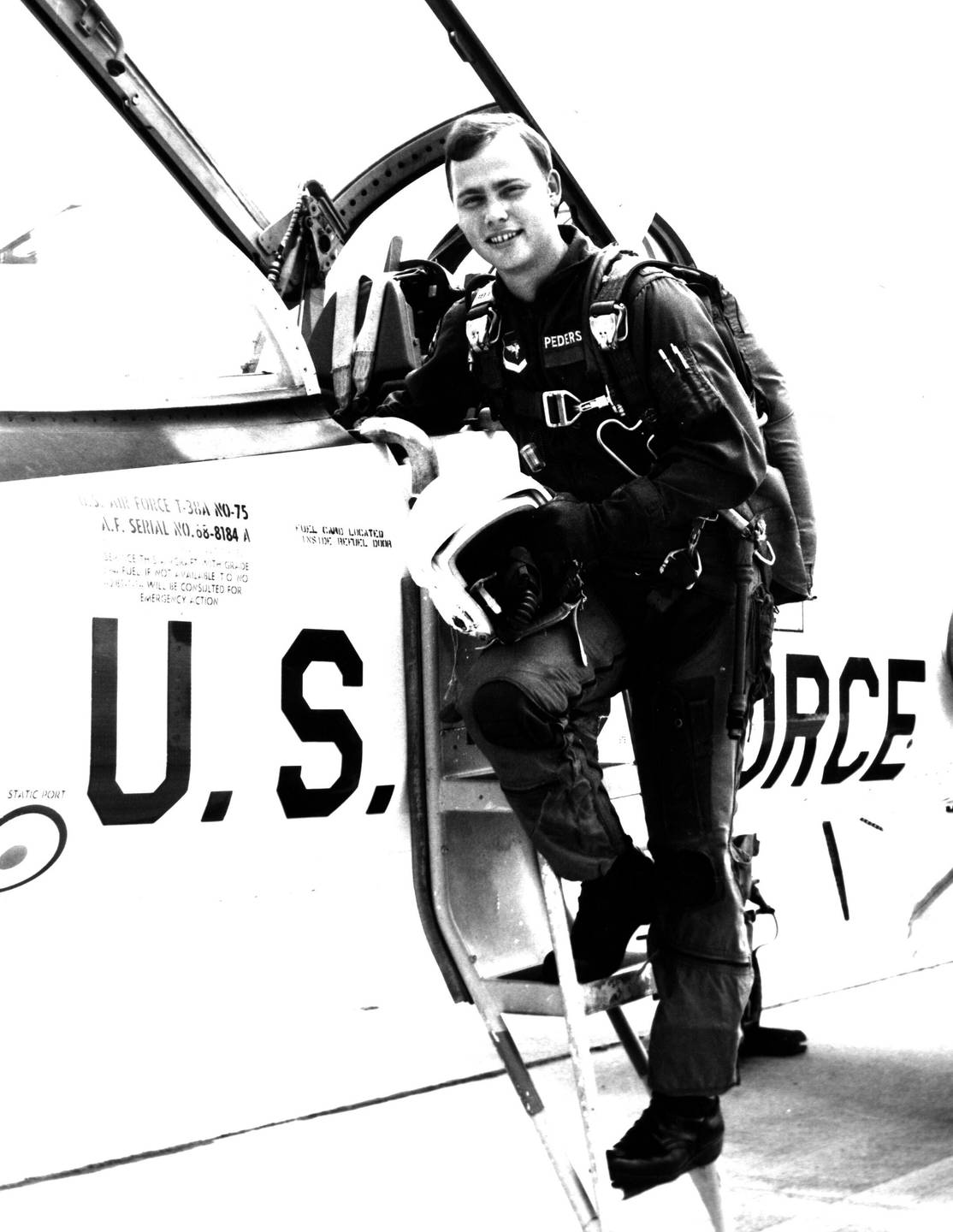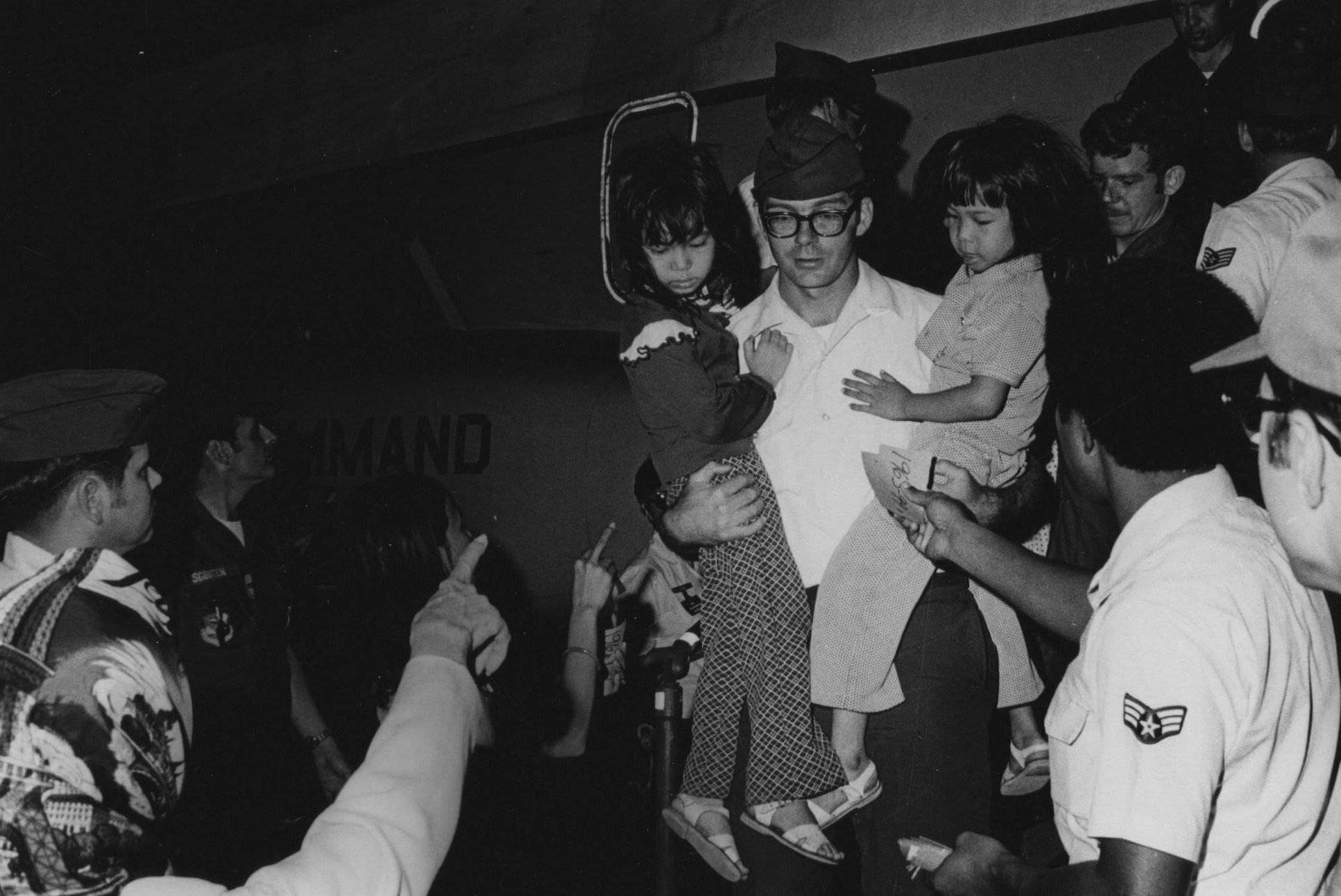
 A Minnesota PBS Initiative
A Minnesota PBS Initiative
I was one of the pilots. It was April 1975 and stormy. South Vietnam was near total collapse. The Saigon Airport area was surrounded by North Vietnamese forces. Many flights of several types of aircraft were being used to evacuate people out of the airport.
Each member of our C-141 Starlifter flight crew was issued a 38 pistol with extra ammunition. When asked how many bullets I wanted, I felt like answering “more than I can carry today” but settled for three dozen rounds.
We were briefed on the air route in and out. USAF F4 Phantom fighters helped defend the sides of a path from the Saigon Airport to the ocean.

Pedersen 1972 Pilot Training.
Two fully-equipped Marines and two nurses traveled with us for protection and any medical aid. We had one 55 gallon drum full of milk cartons on ice. The rest of the 4 engine cargo jet was empty to maximize what we could carry out.
Our crew left Clark Airbase in the Philippines and heading westbound to evacuate as many people as we could carry. No planes were to remain on the ground overnight. No support resources of any kind were available there. We were on our own.
When we arrived, South Vietnamese fighter planes were still taking off from the Saigon Airport to attack the surrounding enemy. We could see their tracer rounds from the sky to the ground in all directions some distance from the airport. We could also see the North Vietnamese forces tracer rounds shooting back from the ground into the sky at the attackers.
As we taxied and made a right hand taxi turn into an aircraft parking location near the airport tower, our nose gear steering broke and locked in-place. We could not take off with it like that. We had to fix it ourselves.
If either saw a missile, he was to fire multiple flares and recommend evasive actions. The plan was for the missile to follow the hot infrared source flare rather than an engine hot exhaust.
We got a team together and used a long metal emergency landing gear pry bar along with two-by-fours to gradually force-twist the nose gear to be straight again. We lashed the broken steering cable ends together. The plane was able to make deep right hand turns but only shallower left hand turns. We would be able to take off with that fix. We needed to.
We loaded Americans and locals of all ages quickly telling them to sit in rows on the metal cargo floor with feet facing forward.
Crew members fixed a cargo strap to the cargo floor at the wall at the end of a row, unrolled it across the peoples’ thighs in that row and fixed the other end of the strap to the floor at the wall at the other end of the row before making it snug.
Each row had a mix of people old/young and small/large with one common “seat belt”. We repeated rows like that until the aircraft was full to the maximum.
There was significant risk to us and our evacuees. While on the ground at Saigon, we kept one of the four engines running so we could use it to rapidly restart the other three engines without ground support. I stayed on headset and in radio contact listening for any order to immediately evacuate if the airport was going to be overrun.
Heat-seeking missiles were a threat. We stationed a crew member at each paratroop door in the rear of each side to watch for missiles. Each was in a body harness anchored to the cargo floor and had two flare guns with extra flares.
Each was on headset in communication to the cockpit so he could call out missile sightings. If either saw a missile, he was to fire multiple flares and recommend evasive actions. The plan was for the missile to follow the hot infrared source flare rather than an engine hot exhaust.
We did not need to fire flares. We climbed as fast and high as we could and headed for the relative safety of the ocean. Some USAF aircraft evacuating people suffered bullet holes. Our aircraft did not. We flew to Clark AB and safely unloaded all of the people there. I was so happy to be able to deliver them to freedom.
He gave me sincere thank you hug for helping the Vietnamese and his family. I was moved by seeing in such a direct way how the evacuation helped rescue a family.
Years later I was working as an engineer at a local utility. A coworker knew of my history flying in the Saigon evacuation and introduced me to a new Contracting Engineer Intern who was Vietnamese. A USAF plane evacuated him and his parents from Saigon. He had just learned that I had flown people out.
We cross-checked our dates to see if I had evacuated his family. It turns out that I had not flow out of Saigon on that same day he and his parents had flown out. Still, he and I felt an emotional connection and we talked. He gave me sincere thank you hug for helping the Vietnamese and his family. I was moved by seeing in such a direct way how the evacuation helped rescue a family.

C-141 unloading evacuees at Clark Air Base.
Story Themes: 14th Airlift Squadron, 1971, 1972, 1973, 1974, 1975, Air Force, C-141, California, Clark Air Force Base, Close Call, Coming Home, Don Pedersen, Evacuating, New Beginnings, Plymouth, Read, Relationships, Saigon, San Bernardino, Starlifter